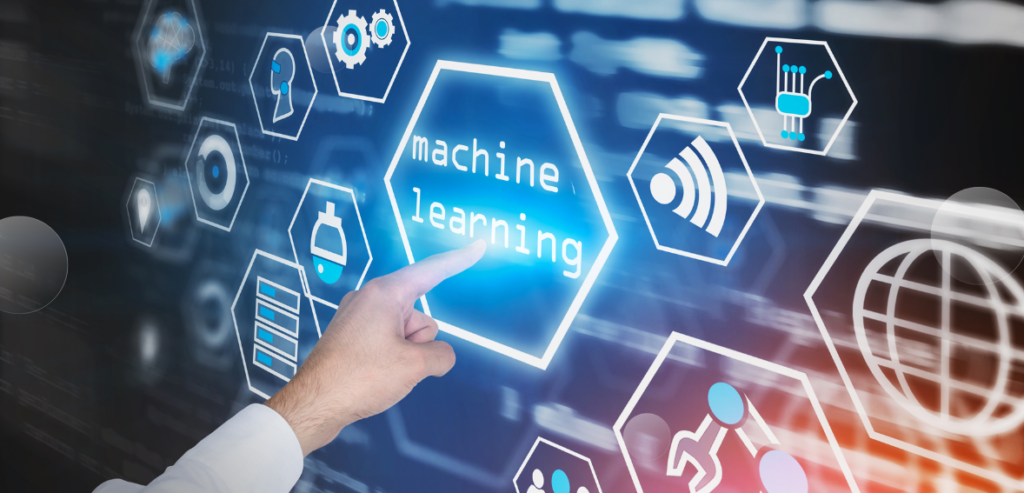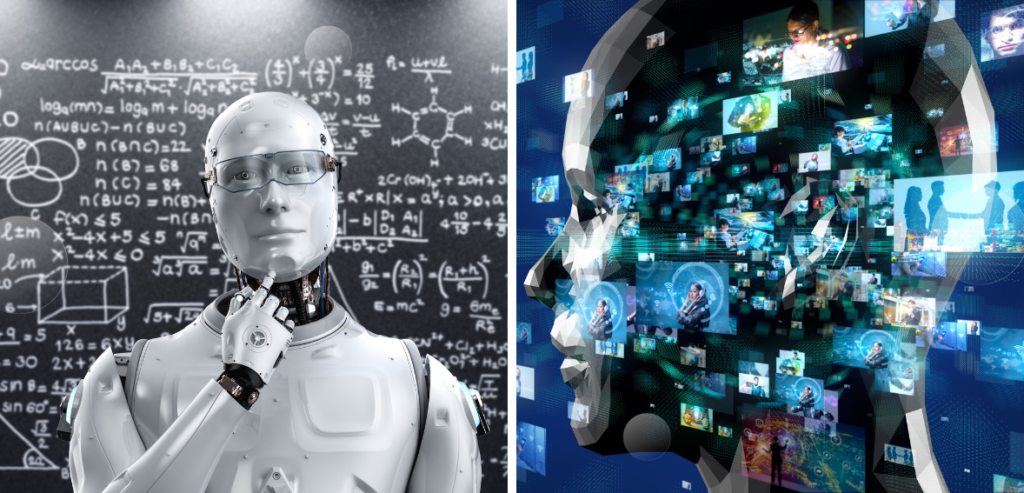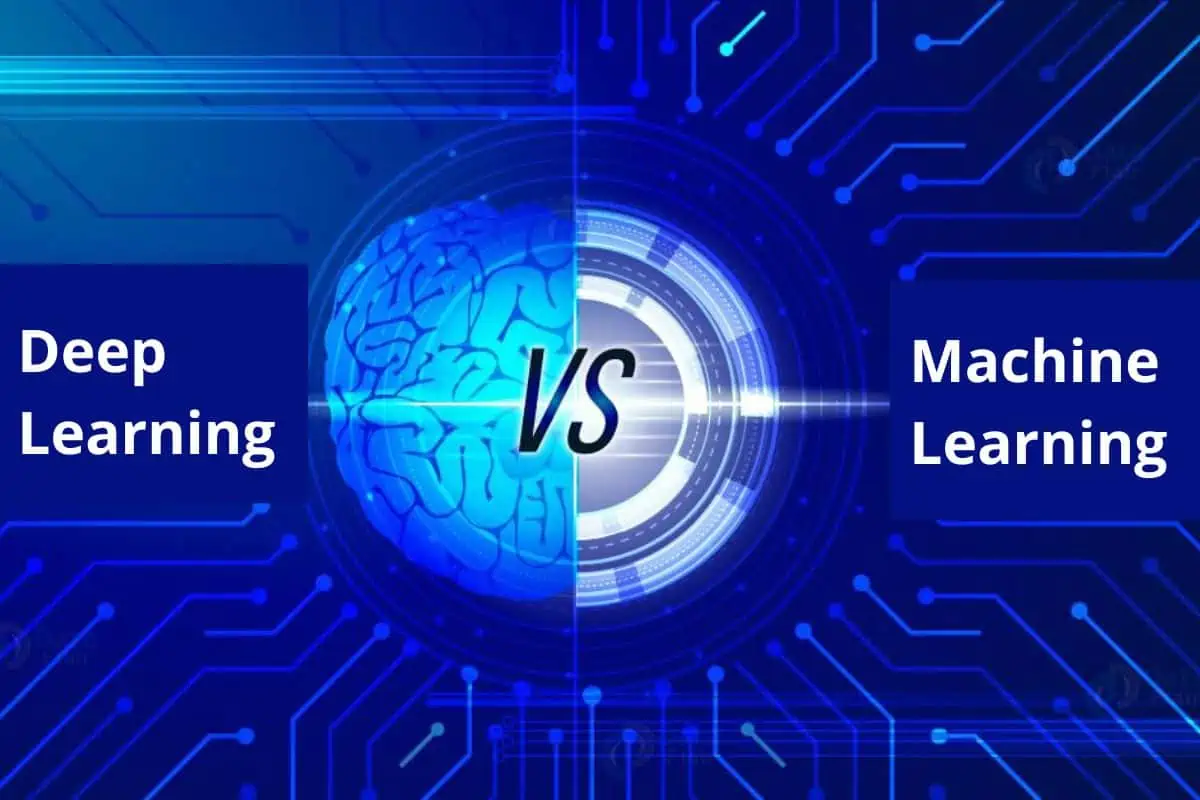Comprehending the most recent developments in artificial intelligence (AI) can be overwhelming. But if you’re only interested in the fundamentals, you can simplify many AI advancements to machine learning or deep learning.
The terms “deep learning” and “machine learning” appear to most people to be interchangeable buzzwords in the AI sector. That, however, is untrue. Therefore, everyone who wants to learn more about artificial intelligence should start by comprehending the words and their differences. The good news is that understanding these words isn’t as tough to know as some articles would have you believe.
Deep Learning vs. Machine Learning
Recognizing that deep learning is a form of machine learning is the first step in figuring out how they differ. Deep learning, however, is seen as a development of machine learning. Without the aid of humans, it uses a customizable neural network to let machines make wise decisions.
What is Machine learning?

The broad term for when computers learn from data is machine learning. It describes the intersection of computer science and statistics, where algorithms are implicitly applied to a specified task. Instead, they identify trends in the data and offer forecasts when new data is available.
Depending on the data used to feed the algorithm, the learning process for these algorithms can generally be either supervised or unsupervised. The straightforward linear regression technique is an example of a traditional machine learning algorithm.
Machine learning is an application of artificial intelligence that involves algorithms that analyze data, gain knowledge from it, and then use what they have learned to make judgments.
How does machine learning work?
An on-demand movie streaming service like Netflix is a straightforward illustration of how machine learning functions. Machine learning algorithms connect the user’s desire with that of other users who have similar movie tastes for the service to decide which movies to propose to a user. Many services that make automated suggestions use this method, which is frequently called AI.
A computer screen, automobile, or flashlight has mechanical purposes, and machine learning entails intricate arithmetic and coding. For something to have machine learning capabilities, it must be able to use the data provided to complete a task and improve over time. If you had a light that lit up anytime, you said, “It’s dark,” it would eventually learn to detect different expressions that included the word “dark.”
Machine learning powers various automated jobs in multiple sectors, from data security companies that hunt down malware to financial experts who want notifications for profitable transactions. The AI algorithms are continuously designed to learn like a virtual personal assistant and are incredibly good at it.
What is Deep learning?

The advanced and intricate mathematical progression of machine learning algorithms is known as deep learning. This topic has recently attracted a lot of attention, and for a good reason—recent advancements in the field have produced previously unthinkable outcomes. Deep learning is utilized in various industries, including fraud detection and customer relationship management (CRM). Actual household products like Alexa use deep learning algorithms to recognize your voice and understand your preferences.
How does deep learning work?
Deep learning refers to algorithms that analyze data using a logical framework akin to how a person would conclude. However, it’s crucial to remember that both supervised and unsupervised learning can lead to this. Deep learning applications use an artificial neural network, a layered framework of algorithms, to do this (ANN). An ANN’s design was influenced by the biological neural network of the human brain, which results in a learning process that is much more powerful than that of traditional machine learning models.
Ensuring a deep learning model doesn’t draw the wrong conclusions is complex, and it takes a lot of training to get the learning process right. However, when practical deep learning performs as intended, it is frequently hailed as a scientific miracle and is widely regarded as the foundation of accurate artificial intelligence.
Difference Between Machine Learning and Deep Learning

Deep learning is a branch of machine learning, practically speaking. Deep learning is a form of machine learning, and it works similarly. Thus, these terms are frequently used interchangeably. Their abilities, however, differ.
Basic machine learning models still require human involvement even if they get better at performing their particular tasks as they receive new data. An engineer must intervene and make corrections if an AI algorithm forecasts incorrectly. On the other hand, a deep learning model enables an algorithm to independently determine whether or not a prediction is accurate through its neural network.
For instance, a machine-learning model flashlight might be set up to turn on when it hears the word “dark” spoken aloud. As it continues to learn, it might carry out that assignment whenever it hears the term “dark” in any sentence. The flashlight might learn to turn on with the cues “I can’t see” or “The light switch won’t work” if it had a deep learning model. A deep learning model may learn using its computational mechanism, which gives the impression that it has a brain of its own.
To sum up, the following are the fundamental distinctions between deep learning and machine learning:
- Machine learning programs parse data, learn from it, and make intelligent judgments based on what they have learned. At the same time, deep learning layers algorithms to produce an artificial neural network capable of learning and making informed judgments.
- Deep learning is more challenging to set up but requires less involvement while running, whereas machine learning requires more continuing human engagement to get results.
- Deep learning systems need more powerful hardware and resources, even though machine learning programs are frequently less complex than deep learning algorithms and run on standard PCs. Because of this need for power, graphics processing units (GPUs) are being used more regularly. GPUs are advantageous due to their high bandwidth memory and capacity to obfuscate memory transfer latency.
- Your email, doctor’s office, and bank all employ machine learning, while deep learning enables more advanced and autonomous systems like self-driving cars or surgical robots.
Types of Deep Learning Algorithms
Computers can produce excellent outcomes thanks to machine learning, but they can’t match human intelligence. On the other hand, deep learning algorithms are fashioned after the human brain and represent a higher level of artificial intelligence.
The following are a few examples of the various deep learning algorithms:
Recurrent neural networks
Deep internal feedback loops in recurrent neural networks (RNNs) enable the algorithm to retain memories of previous data points. RNNs can use this recollection of past occurrences to help them understand current events or make predictions.
Given this context level, a deep neural network can think more effectively. An RNN-powered map application, for instance, can recall when peak traffic hours are. Using this information might suggest a different route to help you avoid getting caught in traffic.
Convolutional neural network
Convolutional neural networks (CNNs) are an algorithm created especially for object and picture recognition. The convolution model uses a unique method of filtering through an image to evaluate each component. CNNs are frequently used to power computer vision, a branch of artificial intelligence that teaches machines how to interpret the visual world. One typical application for computer vision is facial recognition software.
Types of Machine Learning
To understand how machine learning works, you must know and understand its several types. They include the following:
Supervised machine learning
As the name suggests, this branch of machine learning requires the most supervision. This subset sends training data and a model for handling data to a computer. A data scientist oversees the process by verifying the computer’s accurate responses and correcting the computer’s incorrect answers as new data is introduced. The computer eventually picks on patterns and produces reliable results.
Unsupervised machine learning
Unsupervised models entail feeding the computer only unlabeled data. Doing this allows the model to recognize patterns independently as opposed to supervised models, which include providing the model with all the correct answers (labeled data) to train it to detect unlabeled data (incorrect responses). This machine learning technique is typically employed when it is difficult to predict how the results will turn out. In these situations, the computer is used to sift through the many layers of hidden data and group them based on similarities or differences.
Consider a scenario where your company wishes to examine data to discover client categories, but you are unsure of their existence. The unsupervised learning model must be fed the unlabeled data to function as a classifier of customer segments on its own.
Reinforcement learning
A model can learn utilizing feedback from its actions using this form of learning, which is a trial-and-error approach. When the computer successfully classifies or understands data, it receives positive feedback; when it fails, it receives negative input. Positive behavior is reinforced by “rewarding” good conduct and “punishing” negative behavior. When a machine needs to learn a complex activity that requires a large amount of data, like driving a car, reinforcement learning is used. The curriculum develops the decision-making skills needed for many multistep processes through extensive trial and error.
The Future of Machine Learning and Deep Learning
Thanks to machine and deep learning’s capabilities, lives will be changed for generations, and practically every industry will change. Machines could replace work in extreme conditions or complex occupations like space exploration. Furthermore, people will turn to artificial intelligence at the same time to provide rich, futuristic entertainment experiences.
What do machine learning and deep learning mean for customer service?
Today’s customer service AI apps frequently make use of machine learning methods. They are employed to promote self-service, boost agent output, and ensure the dependability of workflows. These algorithms receive a constant stream of incoming consumer queries, together with pertinent background information regarding the problems that customers are experiencing.
Predictions become quicker and more accurate when all that data is combined into an AI application. Because of this potential, artificial intelligence has become an attractive prospect for many firms. According to business leaders, customer service will be one of the most helpful use cases for business-related AI.
For instance, natural language processing (NLP), a field of computer science that enables computers to read text and speech, is powered by machine learning and deep learning. In the world of CX, virtual assistants like Apple’s Siri and Amazon’s Alexa are practical examples of how to use speech recognition to respond to a user’s query.
An AI-powered chatbot also uses the same learning techniques for customer support to respond to entered language.
Data as a fuel for the future
There will undoubtedly be inventions we can’t even begin to conceive because of the enormous amount of new data that the present “big data era” is producing. Data science specialists predict that some innovations will involve deep learning software. According to many experts, developing AI is similar to building a rocket ship because it requires a sizable engine and a lot of fuel.
Summary
Although machine learning and deep learning are frequently used interchangeably, they are fundamentally different. Deep learning programs do not require human intervention or supervision, whereas machine learning applications must. Furthermore, deep learning networks, also known as artificial neural networks (ANN), operate similarly to the human brain, making them more sophisticated and complicated than machine learning systems. The most crucial distinction, however, is that deep learning is a subset of machine learning. It is also a relatively new notion that can transform the way systems operate in every area of the world.
Another distinction is that deep learning systems require more setup time than machine learning programs but can produce results instantly. Machine learning programs can be set up quickly but may have restricted power. You may also perform machine learning on less complex computer systems than deep learning systems, making machine learning more cost-effective. That could imply that running a deep learning system could be more affordable than a machine learning system.

